#savoy castle
Explore tagged Tumblr posts
Text

Castel Savoia, Gressoney-Saint-Jean, Aosta, Italy,
Photo by @roby_aroundtheworld
#art#design#architecture#history#luxury lifestyle#style#luxury house#castle#luxury home#country house#castel#castel savoia#gressoney-saint-jean#aosta#italy#belvedere#beautiful sight#royal#savoy castle#19th century
1K notes
·
View notes
Text

SAVOY CASTLE - ITALY
#savoy castle#castel savoia#castillo savoia#queen#reina#regina#margherita of savoy#magarita#gressoney saint jean#aosta valley#italy#italia#europe#europa
313 notes
·
View notes
Text

The Imperial Staircase, Savoy Castle, Valle d’Aosta, Italy (1904)
peter.rajkai
#peter.rajkai#photographer#imperial staircase#staircase#interior architecture#savoy castle#valle d'aosta#italy
4 notes
·
View notes
Text


#chateau#chateau chillon#switzerland#lac leman#lake geneva#castle#veytaux#savoy#lake#photography#photos#photo#my photos#naturecore#nature photography#nature#medieval#medieval architecture#gothic architecture#light academia#aesthetic#chateau de chillon#chillon castle#princesscore#royalty#royaltycore#schloss chillon
26 notes
·
View notes
Text


The arrival of Princess Grace and Prince Rainier at the wedding of Princess Maria Gabriella of Savoy and Robert de Balkany at Balsan Castle in Eze (France) on June 21, 1969.
#grace kelly#princess grace#floral#hat#cartier#maria gabriella of savoy#savoy#maria gabriella#robert de balkany#balsan castle#eze#france#1969#june 21
9 notes
·
View notes
Text

Queen Margherita of Savoia’s summer house, completed in 1900, boasted technological advances such as hot and cold running water, indoor bathrooms, two boilers, radiators, electricity, and telephone. She spent a quarter century enjoying her fantasy castle and exploring the peaks. A bedroom was made for her husband, but Umberto I was assassinated by Italian-American anarchist Gaetano Bresci before the castle was completed. Only one of the five towers is real, the rest are follies. The views are spectacular from the castle.
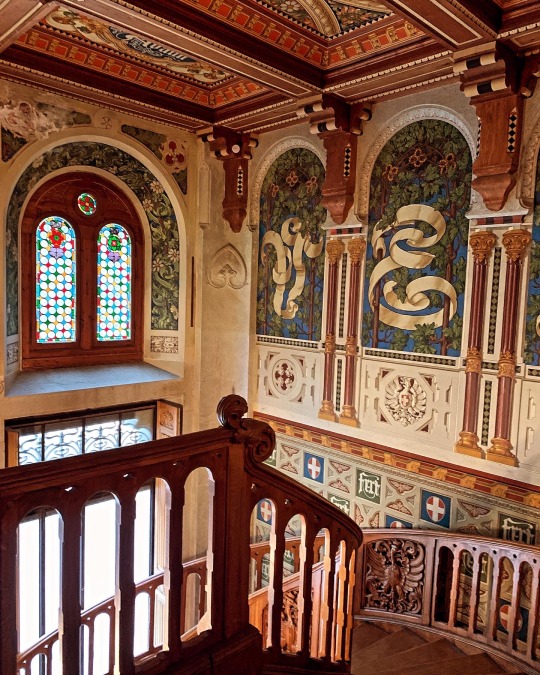
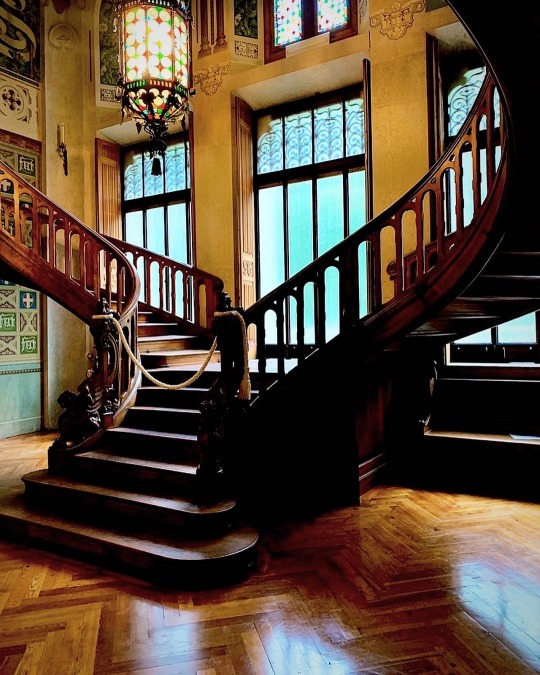
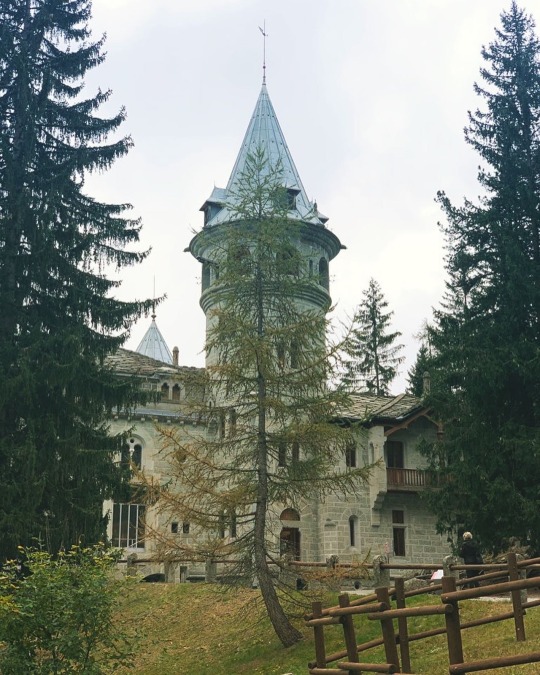
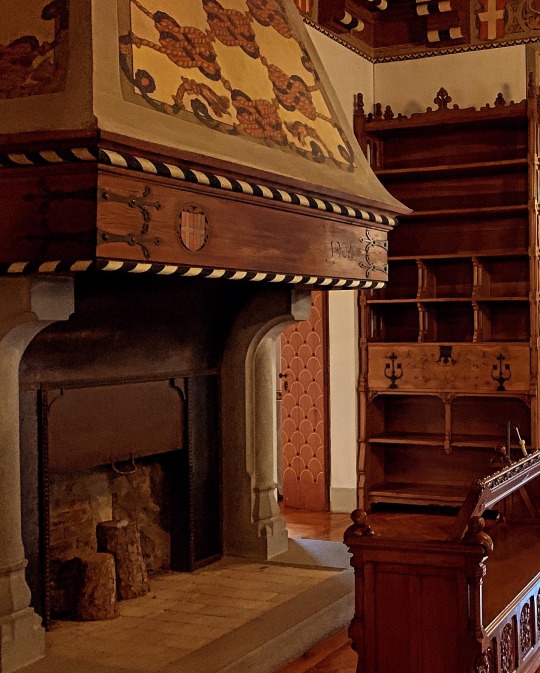
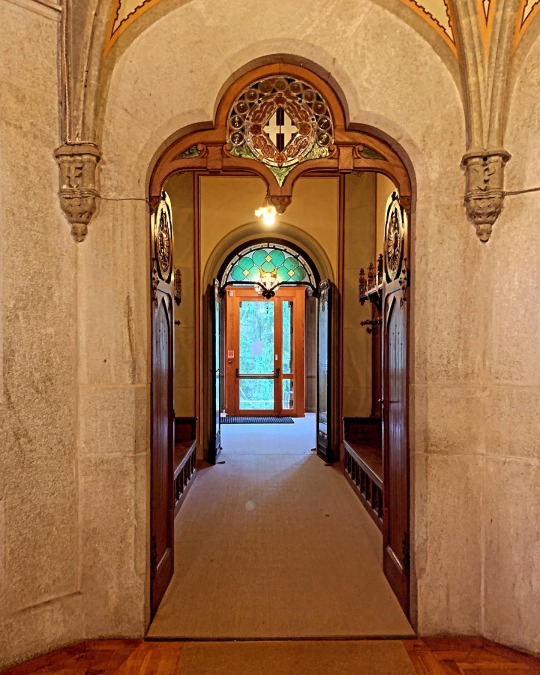

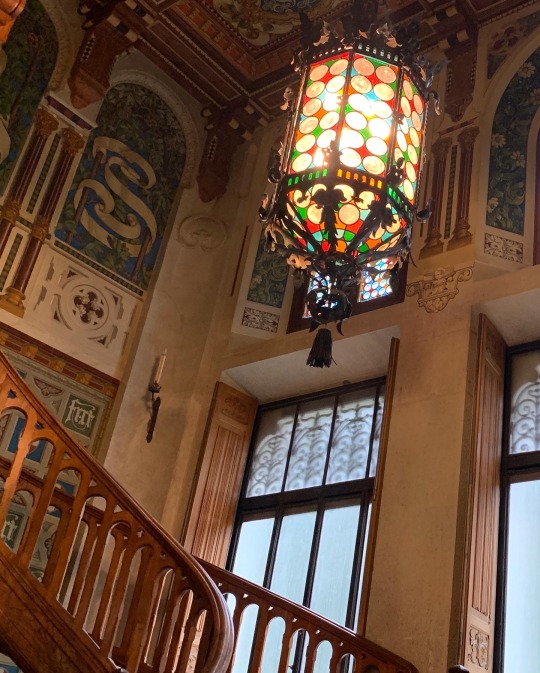
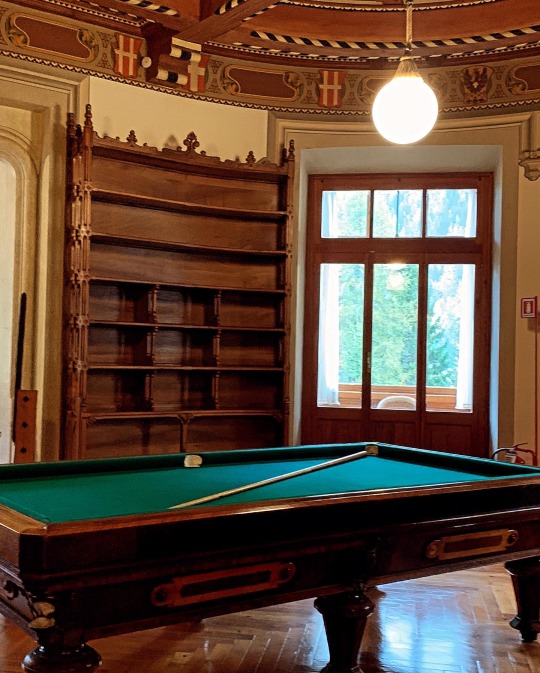
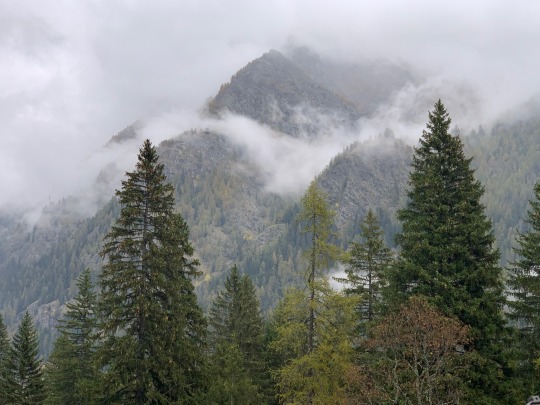
18 notes
·
View notes
Text
A Sardinian castle with many names
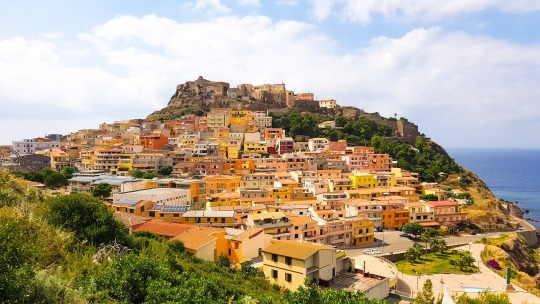
The present town of Castelsardo is identified with the Roman Tibula, but the fact is more a myth than a certainty. Its castle certainly became an impregnable fortress during the Middle Ages thanks to its walls and its seventeen towers.
Initially, the castle of Castelsardo was called Castelgenovese when it was erected by Genoese Doria, probably around 1102, although other sources place its construction a century later. The old town grew up around it. One of the most outstanding buildings from the same period is the Palazzo della Loggia, the seat of the town council since 1111.
A possible link with Catalonia lies in the creation of the bishopric of Ampurias, which recreates the name of the county of Empúries and the bishopric established there between the 6th and 7th centuries. It is for this reason that one of the names it received in the Middle Ages was Castell d'Empúries.
The Sardinian diocese was created in the 11th century and maintained its ecclesiastical independence until 1506, when it was united with that of Civita to create a new bishopric, renamed Ampurias and Tempio in 1839 and Tempio-Ampurias in 1986.
At the beginning of the 16th century, under the domination of the Crown of Aragon, Castelsardo was called Castello Aragonese and in 1586 was built the cathedral of Sant’Antonio Abate, now the co-cathedral of the diocese. At that time, its bastions were reinforced to face the attacks of the Turkish Empire.
Sardinia was born as a kingdom linked to the Crown of Aragon in 1297. With the death of Ferdinand the Catholic in 1516, it passed into the hands of the Spanish Monarchy, first under the Habsburg dynasty and then the Bourbon dynasty, until it was formally incorporated into the Austrian Empire in 1714.
In 1720, the Austrian emperor exchanged Sicily, which was closer to his mainland territories, for Sardinia, where the Savoy dynasty was established. It was around 1767 that the town took its present name by the will of King Carlo Emanuele III.
1 note
·
View note
Video
Aigle,château entouré de vignes par Jean-Daniel Echenard Via Flickr : Aigle,canton de Vaud,région du Chablais--En plein vignoble se dresse l'imposant Château d'Aigle, forteresse édifiée au XIIe siècle par la Savoie et remaniée par les Bernois dès la fin du XVe siècle. Une grande majorité de la récolte de raisins sert à la fabrication de vin blanc sec,une toute petite partie pour du vin rouge.Un musée sur le vin et étiquettes de vin se trouve dans cet édifice.
#Aigle.#Chablais.#musée du vin.#canton de Vaud.#château d'Aigle.#vin.#vignoble.#vigne.#Schloss von Aigle.#paysage Suisse.#Schweizer Landschaft.#Switzerland landscape.#nikon D200.#forteresse.#Savoie.#raisin.#platinumphoto#Castle from Aigle.#leuropepittoresque#flickr
0 notes
Text

The majestic stairway of the enchanting castle constructed by Queen Margherita of Savoy in 1899 - Savoy Castle!
Photo by Peter Rajkai
4K notes
·
View notes
Text
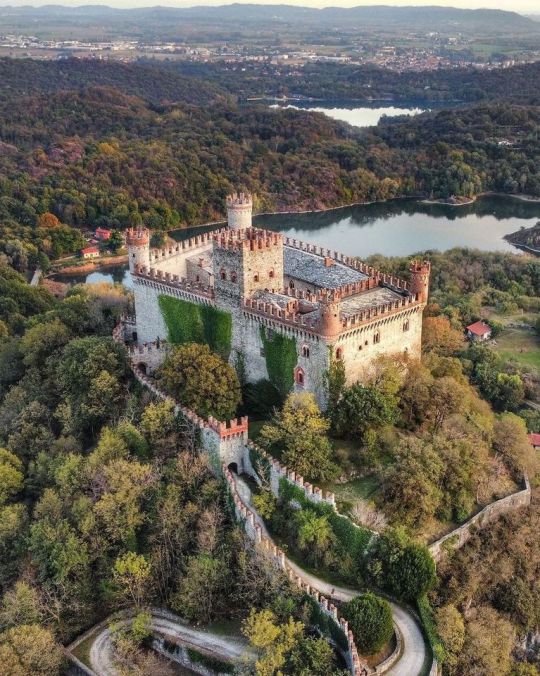
Castello Montalto Dora, Piedmont, Italy,
It was built in the 12th century on Mount Crovero as Castrum Montesalti.
The castle witnessed al lot - it was destroyed several times, rebuilt several times and finally restored. In the 19th century after years of neglect careful restoration brought it back to life.
Courtesy: Famous Architectural Works
#art#design#architecture#history#luxury lifestyle#style#luxury house#luxury homes#castle#luxuryhouses#castello#piedmont#taly#castello montalto dora#duchy of savoy#mount crovero#castrum montesalti
1K notes
·
View notes
Text

CASTEL SAVOIA - ITALIA
#castel savoia#savoy castle#castillo savoia#gressoney saint jean#aosta#valley#italia#italy#europe#europa
66 notes
·
View notes
Text
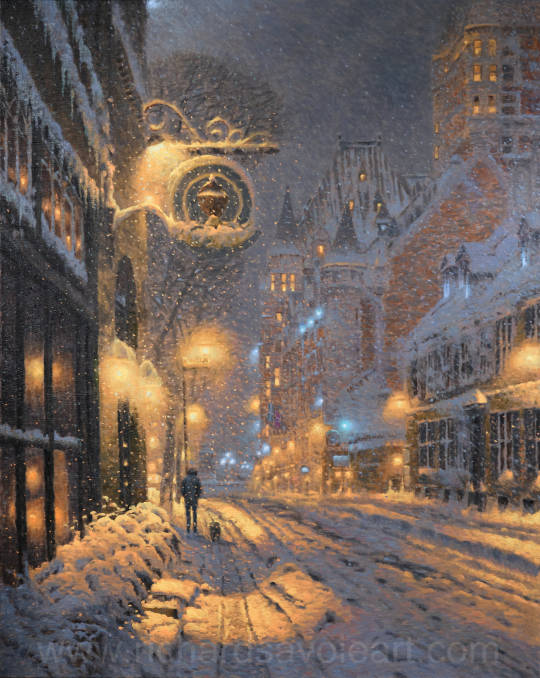
Snow and Wind at the Castle - Richard Savoie
Canadian, b. 1959 -
Giclée ink on canvas , 30 x 24 in.
706 notes
·
View notes
Text

Mourning Ring for Vice-Admiral Sir Samuel Cornish, 1770
Amethyst, diamonds, gold and enamel. Bezel set with a faceted amethyst encircled by diamonds in a closed setting, the shank set with black enamel decoration around the inscription ‘Sir Sam. Cornish … 30 Oct 1770 AE 56’.
Sir Samuel Cornish is remembered for the Capture of Manila in 1762 during the Seven Years War - the conflict that found Britain competing with France and her allies around the globe. For nearly 200 years Manila had been at the centre of the imperial Spain’s galleon trade with Acapulco, trading Mexican silver for Chinese silk, porcelain and spices. After Spain allied herself with France in 1762, the British government approved plans to attack Havana and Manila.
Samuel Cornish was appointed to the command of the naval forces bound for Manila comprising 12 ships-of-the-line, 3 frigates and 4 store ships, with his flag in HMS Norfolk. Brigadier-General William Draper commanded land forces of 6,839 soldiers, sailors and marines. By posting a frigate in the Strait of Malacca, Cornish ensured that no news of the impending strike reached Manila prior to the fleet's arrival on 23 September 1762. The city walls were breached on 5 October and on the following day the place was taken by storm. Draper did his utmost to put a stop to the rape and plunder of the town, and with Cornish agreed to accept a ransom of 4 million dollars from the Spanish acting Governor-General Archbishop Manuel Rojo del Rio y Vieyra.
The British occupation of Manila lasted 18 months until the city was returned to Spain under the 1763 Treaty of Paris.During their time in the Philippines, the British found themselves confined to Manila and Cavite, but were rewarded with the capture of the treasure ships Filipina and Santísima Trinidad. These captures made Draper and Cornish wealthy men to the extent that they could retire on the prize money. Both were thanked in Parliament, and Cornish received a Baronetcy.
Sir Samuel Cornish (c1715-1770) was believed at one time to have risen from modest origins, and to have served his apprenticeship on a collier before being appointed to an East Indiaman, but it has been suggested these details relate to his father. Cornish is known to have entered the navy as a volunteer ‘per order’ in 1728. He was commissioned lieutenant in the Litchfield on 12 November 1739, and on 11 November 1740 he moved, with Captain Charles Knowles, to HMS Weymouth, in which he served in the ill-conducted combined operation at Cartagena during March and April 1741. On his return to England he was appointed to command the bomb-ketch Mortar; and on 12 March 1742 he was posted flag captain of the old HMS Namur, flagship of Admiral Matthews in the Mediterranean. In 1742 Cornish was appointed to command the Guernsey (50); and continued in her until the end of the ‘War of Jenkin’s Ear’, doing occasional good service in the destruction of Spanish privateers.
During the war of the Austrian Succession, he was present at the Battle of Toulon which saw the British lose control of the waters around Italy and Spain take the offensive against Savoy. Matthews was dismissed from the navy along with seven captains for lacking offensive spirit. Cornish’s part occasioned no comment, which must be considered an achievement in the light of the number of careers destroyed. On 9 March 1749, as a 'gentleman well skilled in mathematicks and natural knowledge', Cornish was elected to the Royal Society. In 1755 he commissioned HMS Stirling Castle for service in the channel, and in 1758 he was transferred to the Union (90 guns), and was ordered by Lord Anson to wear a distinguishing pennant.
On 14 February 1759 Cornish was promoted Rear-Admiral of the White, and sent out to the East Indies with a small squadron to reinforce Vice-Admiral George Pocock, and undertook operations to clear the coast of Coromandel, which established his reputation as a commander able to co-operate effectively with the army. He succeeded to the command of the East Indies station in 1761, but became embroiled in a dispute with the East India Company over the plunder taken from the French at Pondicherry. Nevertheless his professional competence in combined operations won him the command of the Manila expedition.
Cornish returned to Europe with a comfortable income from prize money. In 1765 he purchased the manors of Sharnbrook, Tafte, and Temple Hills in Bedford. The Duke of Norfolk supported his election as MP for Shoreham, a seat he held from December 1765 until his death, and on 9 January 1766 he was created a baronet, taking his style as Sir Samuel Cornish of Sharnbrook. About this time he married Susan, daughter of James Gambier of Holborn and sister of Admiral James Gambier; they had no children. Cornish died on 30 October 1770, whereupon his title became extinct and his estate passed to his nephew, Samuel Pitchford, captain in the navy, who took the name Cornish.
54 notes
·
View notes
Text

Saint Pierre Castle in Italy's Aosta valley
is considered one of the oldest in the area and dates back to the 12th century. The castle originally consisted of a residential building and a tower protected by a wall. It is know famous for its nice-looking corner decorative towers of the keep which were added only in the 19th century.
Throughout its history the castle was owned by many noble families like the House of Savoy or the Roncas. The latter expanded and fortified the castle complex in the 17th century. However as time went by the castle gradually lost its significance. It was only in the end of the 19 the century that the fortress was restored to its former glory. There are 9 chambers in the castle that house the regional museum of natural science.
34 notes
·
View notes
Text
Terzo Emeritus: Turin.
Primo | Secondo | Terzo.
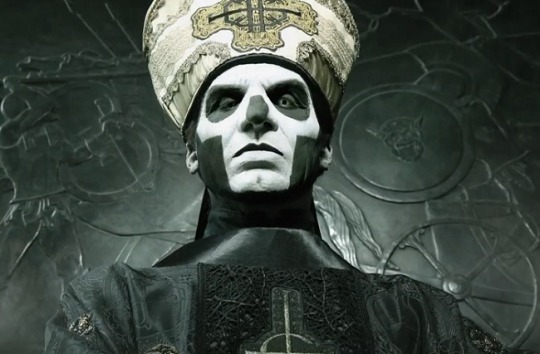
We know Terzo spent some time as a Cardinal in Poland (I'm going to do some research on Krakow too, just for fun), but if I had to locate him somewhere in Italy, I know where to place him. For Terzo, the most mystical and mysterious of the Papas, I have thought of the most evil and contrasting city in Italy: Turin. Turin is, literally, the Italian City of the Devil, and it is divided into two sides, one evil (black) and one good (white). Let's see what may have influenced the rebellious Terzo Emeritus. This will be a long one.
1 - Life and death, good and evil, black and white…
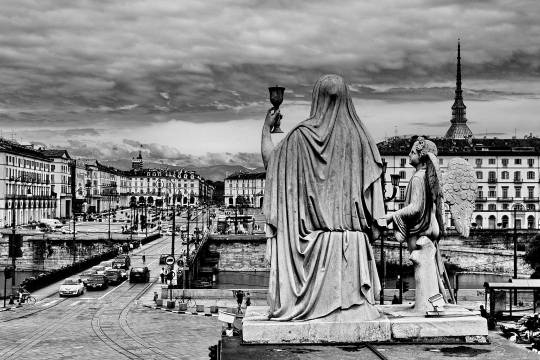
Turin is geographically divided into two sides: the good side to the east, where the sun rises, and the evil side to the west, where the sun sets, divided by the gates of the Royal Palace. Both sides feature monuments and buildings reflecting their predominant energy, and each side counterbalances the magical influence of the other. Turin, with its duality, is both a point of the Black Magic triangle (Turin, London, San Francisco) and one of the White Magic triangle (Turin, Lyon, and Prague).
On the west side, the dark one, the ancient Romans had built the necropolis and the gallows where condemned prisoners were executed. There was nothing but death and darkness.
On the east side, the bright one, the Mole Antonelliana acts as an antenna that gathers white energy from the ground and projects it onto the city through its tip. (Additionally, there is the Sacra Sindone, the cloth with the image of Jesus supposedly printed with his sweat and blood.)
The combination of the two forces creates a coniunctio oppositorum.
Given that Meliora is based on the concept of a city overpowered by dark forces, I believe a whole city where contrasting forces are so strong that they have shaped its aesthetic would have been fitting for him.
2 - Mysterious spectre wrestles power supplies from oligarchs.
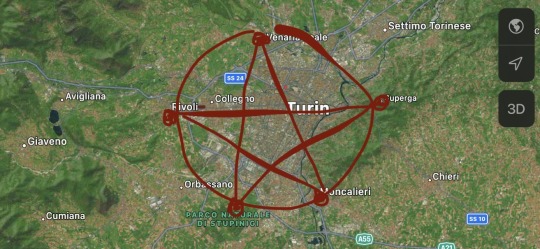
The negative fame of Turin seems to stem from the hard rivalry between the Savoy family and the Vatican, especially during the Risorgimento, when Turin was labeled as "diabolical" due to its strongly anti-clerical positions. Turin (and Savoy family) became the anti-Vatican, basically, and we know how controversial Terzo was considered in the Ministry.
So the Savoy family erected five buildings in five different points of the city to form a pentacle: the hunting reserve of Stupinigi, the Moncalieri Castle, the Rivoli Castle, the Venaria Reggia, and the Basilica of Superga. (I have tried tracing the pentacle lines myself, as you can see in the image. Yep, that’s true.) Additionally, the cremation practice was strongly pushed by Turin, in opposition to the traditional burial.
And you are here to stay and burn with me, right?
3 - Lucifer’s statue.
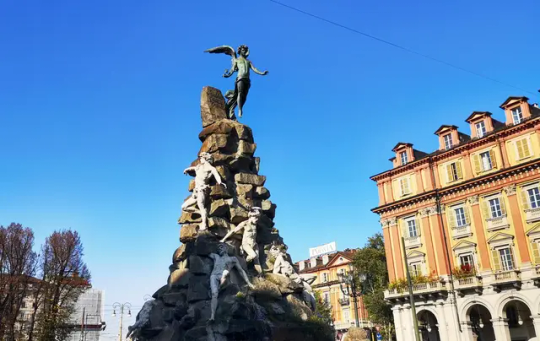
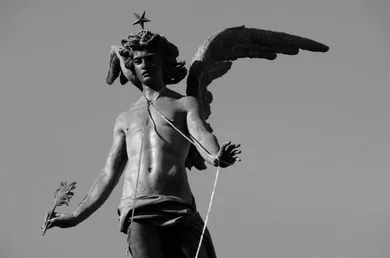
Piazza dello Statuto coincides with the apex of the black magic triangle and the place where prisoners were executed, and it is right here that the presumed statue of Lucifer stands, above a necropolis that is called both la Vallis Occidanum, “West valley” or "where the sun sets" and Vallis Occisorum "Valley of the murdered". The statue is actually a fountain, built in memory of the victims of the Frejus tunnel accident... but looking at it, it's easy to understand that there is something more. The angel placed on the top of the fountain bears an upside-down five-pointed star on its head, and its gaze is not directed towards the Frejus, as one would expect, but towards the white part of the city. Towards the light.
I don’t know you, but to me, He is.
4 - The Masonic headquarters.
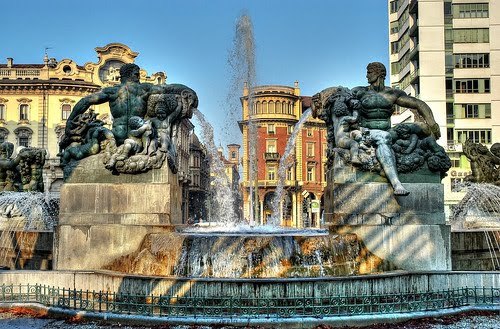
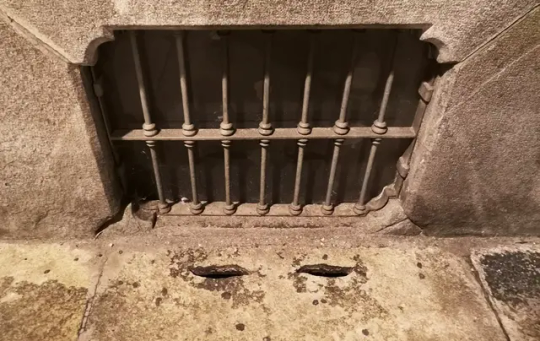
Terzo was known to have included many references to the Freemasons, especially in Square Hammer, where many see in the lyrics the tale of a Freemasonry initiation ritual.
In Piazza Solferino, we find the Fountain of the Four Seasons, where the four seasons are represented by four statues: spring and summer by two female figures, while autumn and winter by two male figures. Those male figures are identified with the giants Boaz and Joaquin, supporters of the pillars of Hercules which, in Masonic symbolism, would represent the first step of the initiate in their Masonic journey. Furthermore, it is said that the water of that fountain it’s a source of knowledge.
Continuing on the Masonic path, on via Lascaris, there is now a bank, but in the past, it was the headquarters of a Masonic lodge (curious that in a former Masonic lodge, there is now a bank... Mummy Dust-curious). On the sidewalks of the street, you can notice cracks in the shape of evil eyes. The gaze of the devil.
5 - The first lightning rod in Italy.
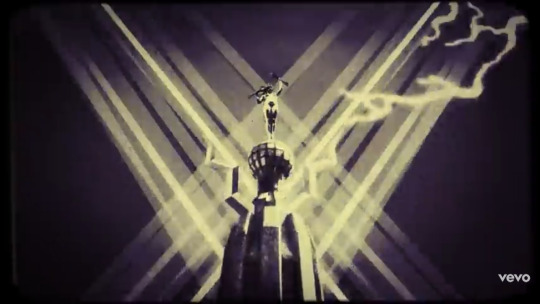
Terzo is often depicted surrounded by lightning, so he must have felt at home in Turin. In 1752, in fact, Gianni Battista Beccaria successfully repeated Benjamin Franklin's experiment by installing a lightning rod above his apartment. He created the first lightning rod ever seen in Italy, but since then Beccaria was accused of wizardry for his ability in manipulating electrical energy.
I know that I set a maximum of 5 points, but Turin is so full of occultism that I had to add a bonus point. 👇🏻
6 - the Devil’s door.
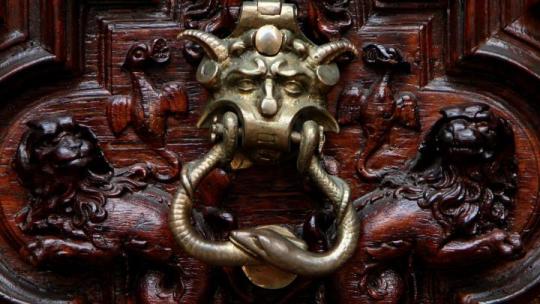
This door could have a post on its own for how much there is to say about it, but I’ll cut it short.
Legend has it that it was built in one night by the devil himself to punish a man who had invoked him in vain, and since its installation, terrifying episodes have occurred inside the building, such as the disappearance of a soldier or the murder of a dancer stabbed during a dance that lasted three days and three nights.
The decorations on the door are rich in esoteric symbolism (There is also a little rat…) and in the center, the clapper is literally the face of the devil with two snakes, while in the central column there is a monster holding the world in its claws.
Today, this building also houses a bank… my Mummy Dust.
#the band ghost#papa emeritus lll#ghost band#ghost headcanons#italian cities#terzo emeritus#ghost theories#papa terzo
70 notes
·
View notes



